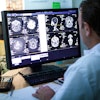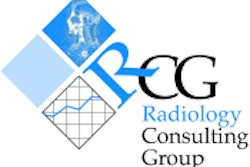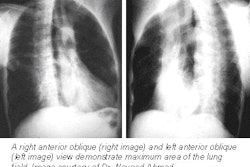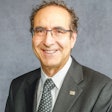Houston fears floods, Dallas disdains tornadoes, and San Francisco gets the shivers just thinking of earthquakes. Not surprisingly, one of the most highly developed disaster recovery systems is at the 600-bed University of California, San Francisco Medical Center, where the state requires special seismic testing before each heavy new scanner is installed.
UCSF developed a hierarchical storage management (HSM) system that begins with conventional DICOM/PACS components. Current image data is stored on a redundant array of inexpensive disks (RAID). A database with supporting information is maintained simultaneously with the PACS.
When image data arrives in the system, it is compressed and encoded. Within hours it is sent encrypted through the Internet to an off-site tape jukebox storage system. The original DICOM data set is used for primary radiological interpretation, while the off-site data are available for recall if needed, according to David Avrin, MD, PhD, who is in charge of radiological informatics at UCSF,
The medical center has tested its off-site PACS recovery and found there are six basic requirements and phases:
- Availability of a computer platform.
- Reloading of the system, database, and application software, if necessary.
- Re-establishment of network connectivity to the remote-site wide-area network (WAN).
- Recovery of the database.
- Recovery of the image data set.
- Re-establishment of the on-site local-area network (LAN) connectivity to the WAN.
One possible problem that Avrin said may be overlooked in setting up an off-site backup for image data is the lifetime of the media, which greatly exceeds the lifetime of the devices that read and write it. For example, it would be almost impossible to find a machine to read an 8-inch floppy diskette today. It is relatively useless to have media that will last 50 years if you don’t have a plan to continually rewrite it to currently readable technology.
In other words, Avrin said, you don’t want to have a time bomb in your software. This is the attraction of the ASP model, which puts the responsibility for obsolescence avoidance on the shoulders of an outside vendor.
In the UCSF disaster test, all software and hardware was current. Even then, the medical center found that a test database recovery of 62,042 patients, 198,215 studies, and 3,912,496 images (approximately three studies per patient, 20 images per study), took 2.5 hours using a 100-MB Ethernet connection.
It took nearly 44 days to recover the test images. Avrin estimates that the department can also recover about one day’s PACS volume in 2.5 hours.
Avrin noted that PACS networks are so specialty-specific that hospital IT departments have trouble dealing with them. Many radiology departments find that their facility’s IT staff doesn’t even know what a PACS is. On the other hand, radiology staff may lack the institutional perspective of their hospital’s IT department.
By Robert BruceAuntMinnie.com contributing writer
January 17, 2002
Related Reading
Disaster recovery case study #1: The Dallas VA alternative
Copyright © 2002 AuntMinnie.com



















